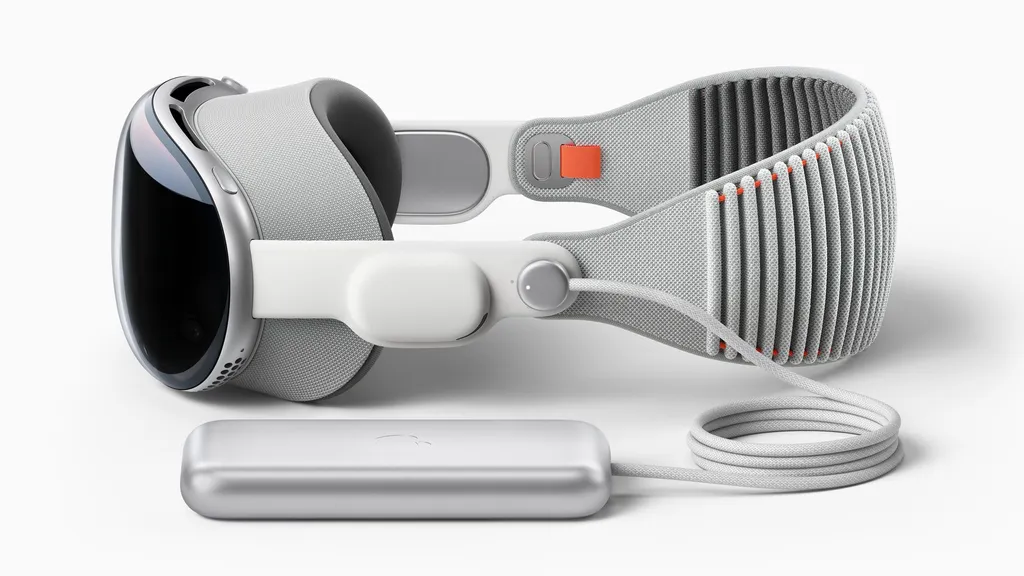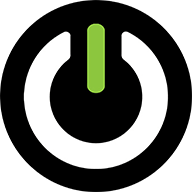Apple officially revealed the Vision Pro specs when opening preorders today.
Vision Pro is physically opaque, but uses high-resolution color cameras to show you the real world, and a display on the front to show your eyes to other people.
It's an ultra high-end "spatial computer" packing in the highest resolution and most sensors ever in an AR/VR product. It introduces new features never before shipped, and its visionOS fuses eye tracking and hand tracking for intuitive input with a unique take on the spectrum of immersion.
| Apple Vision Pro | Meta Quest 3 | |
| Operating System | visionOS | Meta's Android Fork |
| Lens Adjustment | Fully Automatic | Manual |
| Supported IPDs | 51mm–75mm | 53mm–75mm |
| Displays | 3660×3200 Micro-OLED |
2064×2208 LCD |
| Refresh Rates | 90/96/100 Hz | 72/80/90/120 Hz |
| HDR | ✅ | ❌ |
| Chipset | Apple M2 (5nm) w/ 10-core GPU |
Qualcomm XR2 Gen 2 (4nm) w/ 6-core GPU |
| RAM | 16GB | 8GB |
| Color Cameras | 2x 6.5 megapixel | 2x 4 megapixel |
| Tracking Cameras | 6x | 4x |
| Depth Sensors | IR Projector + LiDAR |
IR Projector |
| Hand Tracking | ✅ | ✅ |
| Eye Tracking | ✅ | ❌ |
| Face Tracking | ✅ | ❌ |
| Body Tracking | ❌ | Upper |
| Battery Location | Tethered External | Internal |
| Battery Life | 2 hours (general) 2.5 hours (video) |
1.5-2.5 hours (use-dependent) |
| Front Display | ✅ | ❌ |
| Microphones | 6 | 3 |
| Wi-Fi | 6 (2.4+5 GHz) |
6E (2.4+5+6 GHz) |
| Authentication | OpticID | Pattern |
| Weight | 600–650g (headset only) |
515g |
| Tracked Controllers | ❌ | ✅ |
| Glasses Support | ❌ | ✅ |
| Prescription Inserts | $150 | $50 |
| Storage & Price | $3500 (256GB) $3700 (512GB) $3900 (1TB) |
$500 (128GB) $650 (512GB) |

Design & Weight
Vision Pro has a custom aluminum alloy frame supporting a curved "three-dimensionally formed" laminated glass front plate.
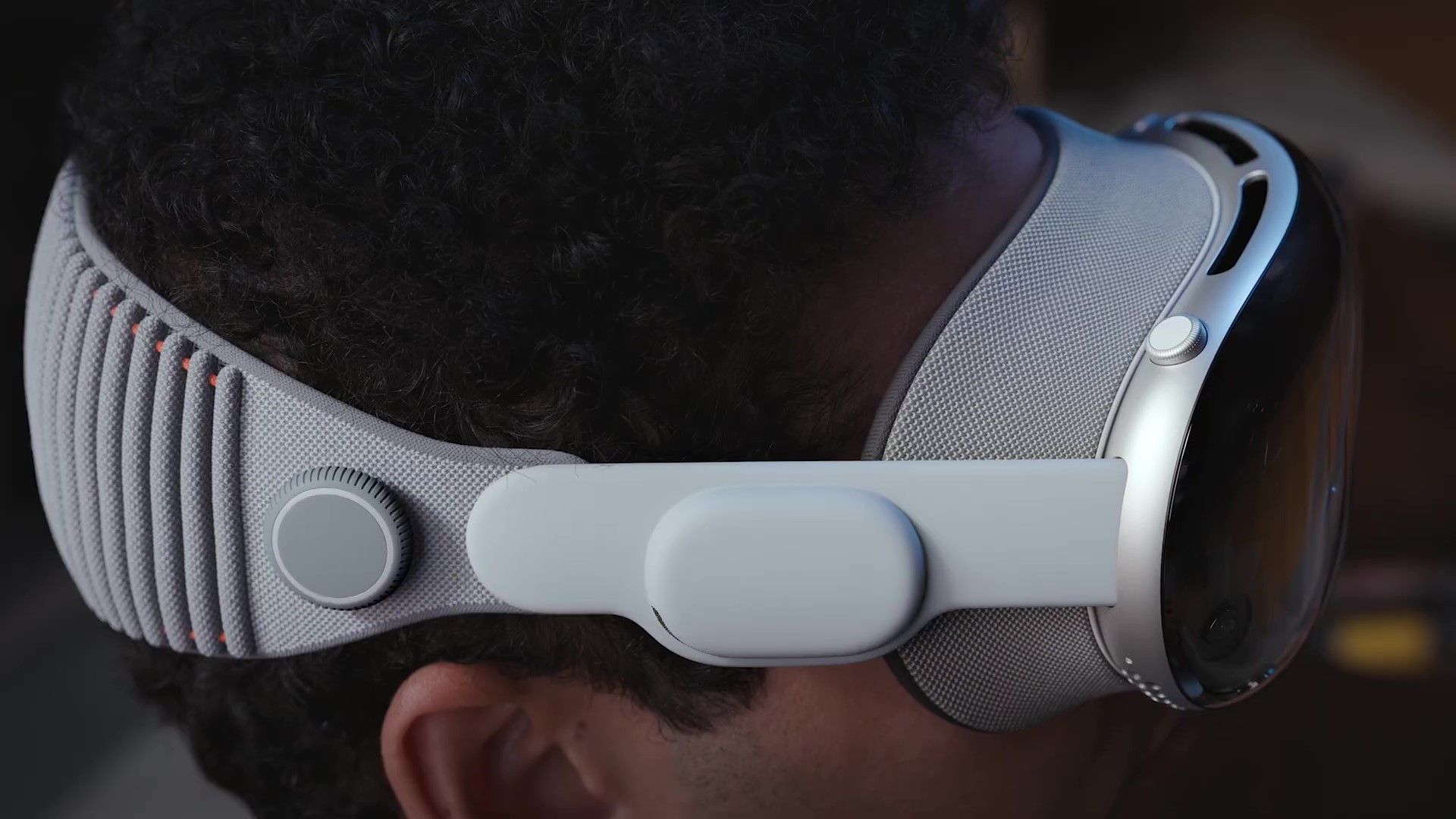
Some other headsets like Meta Quest Pro and Pico 4 have their battery in the rear of the strap, but Apple's design takes it off your head entirely with an external battery tethered to a magnetic connector on the left arm.
Apple says the battery will last for 2 hours of general use or 2.5 hours of video watching.
Despite its external battery design, Vision Pro is quite a heavy headset, at least partially due to its choice of materials. It weighs between 600 and 650 grams depending on the light seal size and chosen head band, and almost all that weight is in the visor itself as Vision Pro's strap isn't rigid.
For comparison, Meta Quest 3 weighs 515 grams with the default strap, while Bigscreen Beyond weighs 127 grams - though it's a tethered PC VR headset, lacking computing hardware or any cameras.
Apple Vision Pro comes with two different straps in the box, the Solo Knit Band and the Dual Loop Band.
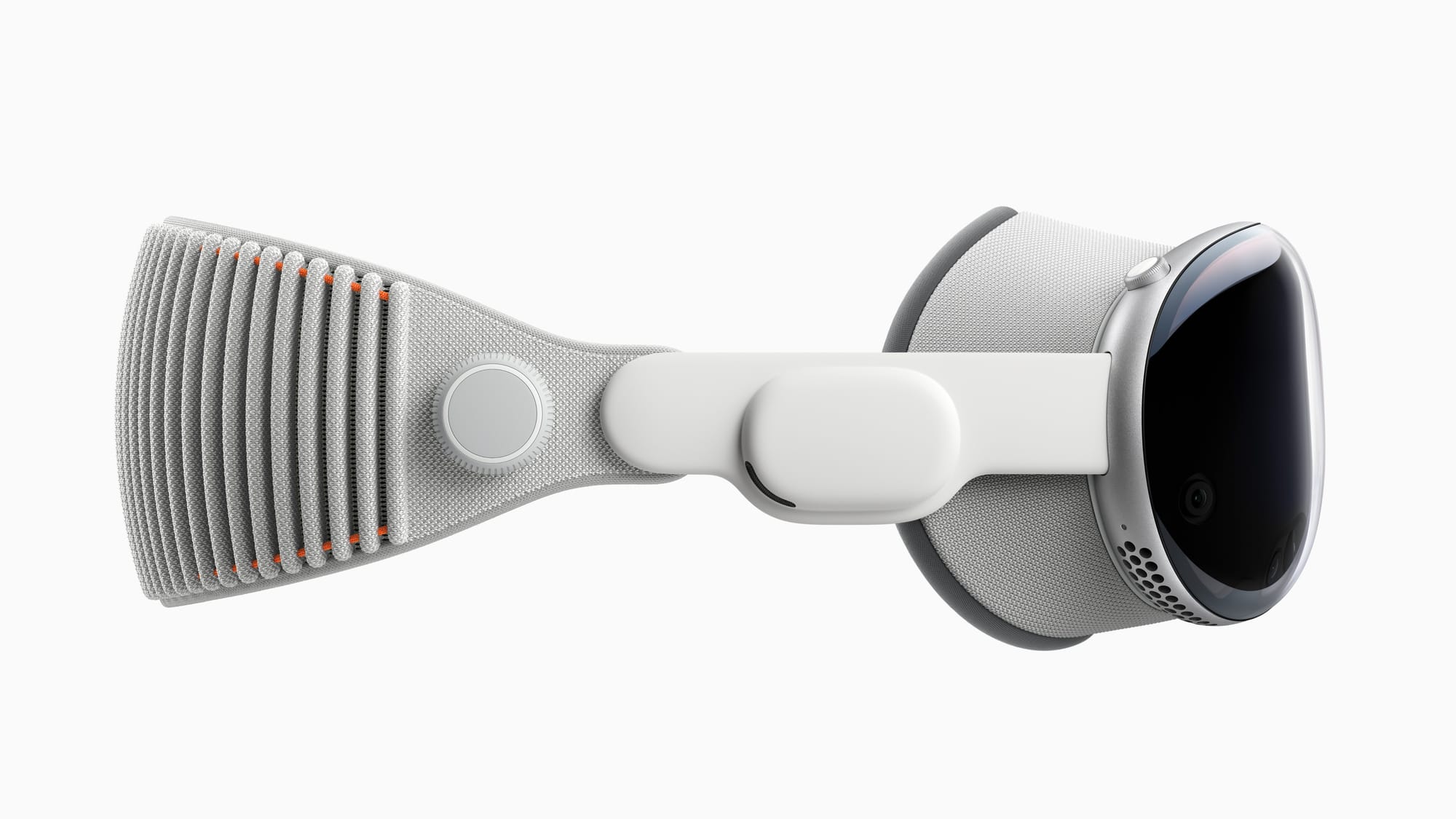
The Solo Knit Band is the strap you see in almost all of Apple's marketing shots, including the one envisioning in-store demos, but early impressions suggest the it isn't sufficient to support the headset's weight, likely because it lacks a top strap.
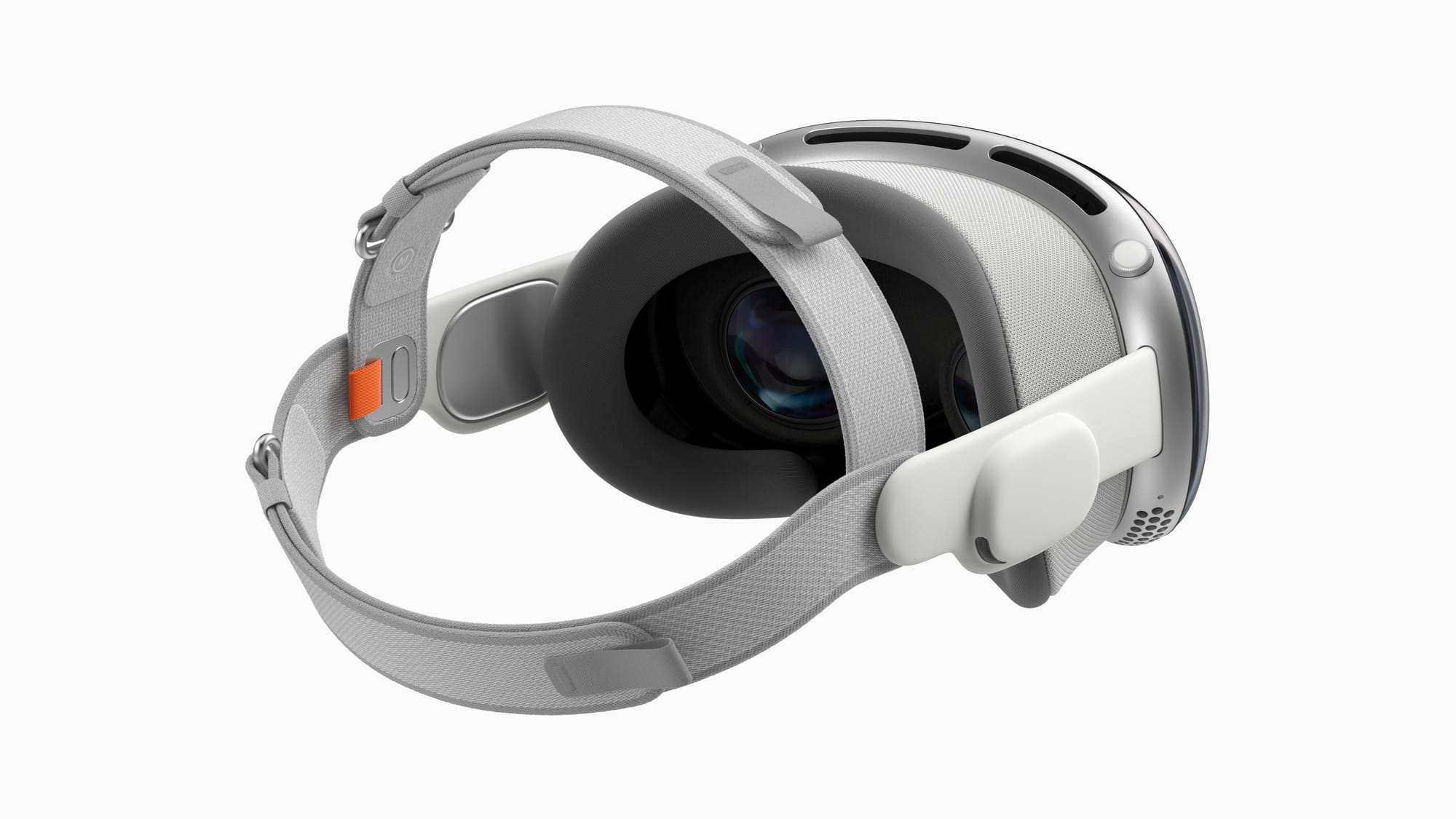
The Dual Loop Band has a thinner back strap that sits lower on the back of your head, but crucially also has a side-to-side top strap to better support the headset's weight. It may be a necessity for comfort.
Near-4K OLED Microdisplays
Vision Pro features dual OLED microdisplays with unprecedented pixel density, squeezing a combined 23 million pixels into two rectangles Apple says are the size of postage stamps. The gap between the pixels is just 7.5 microns, which should mean no "screen door effect" of any sort.
The use of OLED means Vision Pro can display true blacks, not just the murky dark greys of LCD.
| Headset | Display Tech | Resolution Per Eye |
| Oculus Rift & HTC Vive (2016) |
OLED | 1080×1200 (PenTile) |
| Valve Index (2019) |
LCD | 1440×1600 |
| Meta Quest 2 (2020) |
LCD | ~1680×1870 (est) |
| Meta Quest 3 (2023) |
LCD | 2064×2208 |
| Bigscreen Beyond (2023) |
Micro-OLED | 2560×2560 |
| Apple Vision Pro (2024) |
Micro-OLED | 3660×3200 |
The displays can run at 90Hz, 96Hz, or 100Hz, and this can be decided by the system based on the kind of content you're viewing. For example, when watching 24 FPS movies the screen will run at 96 Hz, showing each movie frame for three display frames.
Apple says the color gamut is 92% DCI-P3, slightly lower than what you'd get with modern QD-LCD displays like on Quest Pro, but higher than most regular LCDs.
A Plethora Of Cameras & Sensors
Vision Pro has a total of 12 cameras, a LiDAR sensor, a depth projector, and six microphones.
Passthrough AR
Eight of the twelve cameras are under the front glass.
Two of these provide high resolution color for the headset's passthrough view of the real world, with 6.5 megapixel resolution. For comparison, Meta Quest 3's passthrough cameras are 4 megapixel.
The other four front cameras are used for headset positional tracking, and likely have fisheye lenses.
Vision Pro also includes ambient light sensors and flicker sensors to match the rendering of virtual elements to the lighting of your real environment.
Hand Tracking
Apple describes the hand tracking quality as "so precise, it completely frees up your hands from needing clumsy hardware controllers."
Vision Pro lacks any kind of tracked controllers, though it supports playing traditional iPad games on a virtual screen with a gamepad.
LiDAR Environment Meshing
The LiDAR sensor is used to perform real time 3D meshing of your environment, in conjunction with the other front cameras.
Apps can leverage this mesh but don't get access to actual camera data. One use case example Apple gave was virtual objects casting shadows on real tables, but this only scratches the surface of what should be possible.
Face & Eye Tracking For FaceTime And More
Two downwards-facing cameras track your face, while four internal IR cameras beside them track your eyes, helped by a ring of LED illuminators around the lenses.
Vision Pro's eye tracking serves three purposes: authentication, foveated rendering, and driving your FaceTime avatar.
Apple is calling its new iris scanning authentication OpticID, following the naming scheme of TouchID and FaceID from its other devices. OpticID is how you unlock Vision Pro, and it also works with Apple Pay purchases and password autofill. As with TouchID and FaceID, the biometric data powering OpticID is processed on-device by a Secure Enclave Processor.
Foveated rendering is a technique where only the small region of the display that your eyes are currently looking at is rendered in full resolution, thus freeing up performance since the rest is lower resolution. Freed up GPU resources can be used for better performance, to increase rendering resolution, or to increase graphics settings. It leverages the fact that our eyes only see in high resolution in the very center of the fovea.
Finally, eye tracking combines with the downwards cameras to track your facial expressions in real time to drive your FaceTime Persona, Apple's take on photorealistic avatars. Meta has been showing off research towards this for over four years now, but Apple will be the first to ship – albeit seemingly not to the same quality of Meta's research.
R1 Chip For Ultra Low Latency
To fuse the input from all these cameras, sensors, and microphones together, Apple developed a custom chip called R1.
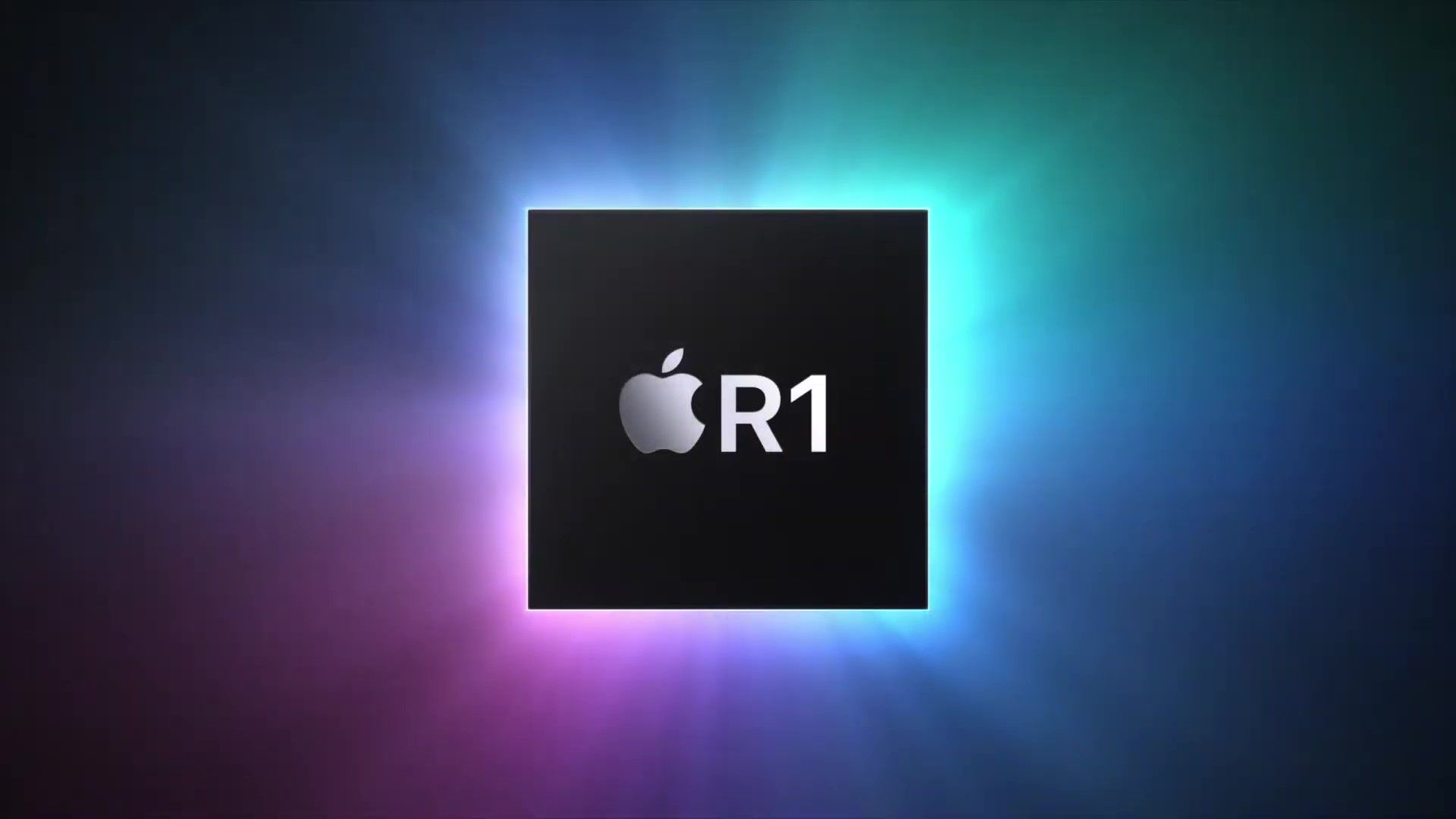
The R1 chip has 256GB/s memory bandwidth, more than any other mobile chip, and Apple claims it "virtually eliminates lag, streaming new images to the displays within 12 milliseconds", which is the same latency Qualcomm claims for Snapdragon XR2 Gen 2 headsets like Meta Quest 3.
Digital Crown
Vision Pro only has two physical controls, both on the top. A Capture Button, to record spatial videos or spatial photos at any moment, and a Digital Crown.
Pressing the Digital Crown brings up the system main menu. Turning it controls your level of immersion, all the way from full passthrough to full immersion. If you go halfway, for example, you'll see VR in front of you and AR behind you.
On existing headsets like Meta Quest and Pico 4, passthrough is a toggle option, meaning you have to choose between full and no immersion. Apple instead lets you choose exactly how engaged to be with your real surroundings.
EyeSight & Person Awareness
A completely unique feature of Vision Pro is an external display that shows your eyes to other people in the room and indicates how aware of them you are. Apple calls this technology EyeSight.
When a virtual element is blocking your view EyeSight shows a colored pattern in front of your eyes, and when you're in a fully immersive experience it shows only the pattern with your eyes invisible.
When someone comes close to you, Vision Pro will show a cutout of the person and EyeSight will reveal your eyes to them.
EyeSight uses a lenticular display so the perspective of your eyes looks correct regardless of the angle people are looking at the headset from.
Apple described making sure that you're "never isolated from the people around you" as one of its "foundational design goals" for Vision Pro, and the company sees it as a clear differentiator to fully opaque headsets like Meta Quest.
M2 Chip For 'Unparalleled' Performance
Vision Pro is powered by the Apple M2 chipset, also used in the latest MacBook Air, Mac Mini, and iPad Pro. Apple confirmed that Vision Pro uses the 10-core GPU model.
The chipset is paired with 16GB RAM, and between 256GB and 1TB of storage depending on the model you buy.
| Meta Quest 3 | Apple Vision Pro | |
| Chipset | Qualcomm Snapdragon XR2 Gen 2 |
Apple M2 (10-core GPU) |
| Process | 4nm | 5nm |
| CPU Cores | 2x Performance + 4x Efficiency |
4x Performance + 4x Efficiency |
| GPU Cores | 6x | 10x |
| RAM | 8GB | 16GB |
| Storage | 128GB ($500) 512GB ($650) |
$3500 (256GB) $3700 (512GB) $3900 (1TB) |
| Battery | Internal | Tethered External |
Vision Pro's GPU should be least 50% more powerful than even the overclocked Adreno 740 in Qualcomm's new Snapdragon XR2+ Gen 2. And this doesn't even take into account the fact that Vision Pro supports eye tracked foveated rendering, freeing up resources by only rendering the region of the display you're currently looking at at full resolution.
When all specs are taken into account, developers should be able to deliver much higher fidelity experiences on Vision Pro than they can on Quest 3 or any other upcoming competitor, closer to PC VR than ever before in a standalone headset.
Personalized Ray Traced Spatial Audio
Vision Pro has "audio pods" on its side, each with two drivers. Apple describes it as the "most advanced Spatial Audio system ever."
If you have an iPhone with a FaceID sensor you can scan your face to enable Personalized Spatial Audio, where the system will tailor the sound to your head and ear geometry for the most precise possible spatial audio.
Vision Pro also uses a technique called Audio Ray Tracing, where it scans the features and materials of your space to "precisely match sound to your room." This technique is also used in Apple's HomePod speakers.
Apple claims Vision Pro buyers will be "totally convinced that sounds are coming from the environment around you."
Pricing & Availability
Apple Vision Pro is exclusively available from the Apple web store. The first deliveries are set to begin on February 2, when the headset will also be available in physical Apple Stores in the US.
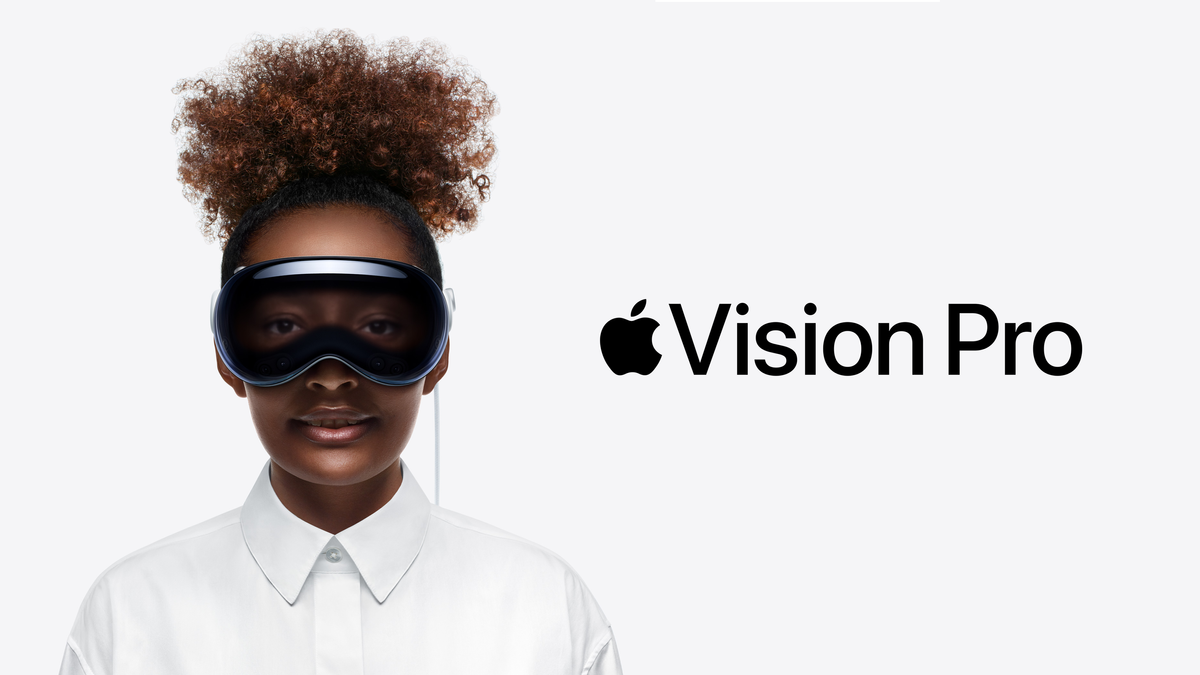
The $3500 base model has 256GB of storage. A 512GB storage model is available for $3700, while 1TB is priced at $3900.

